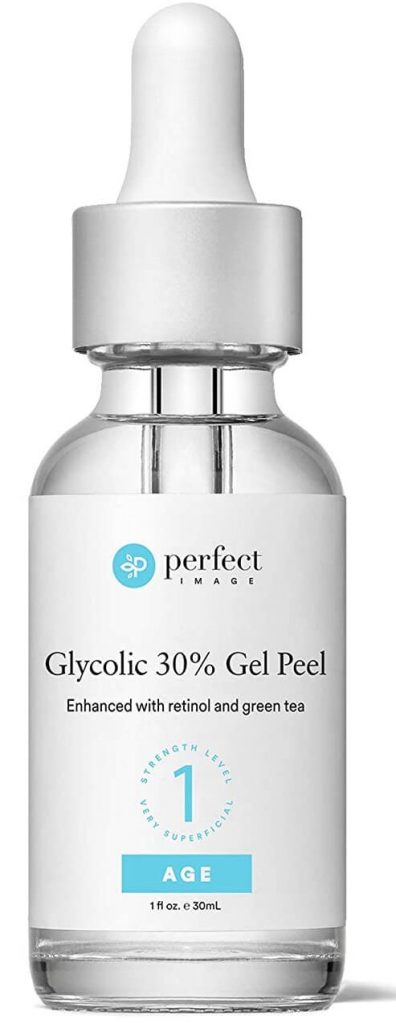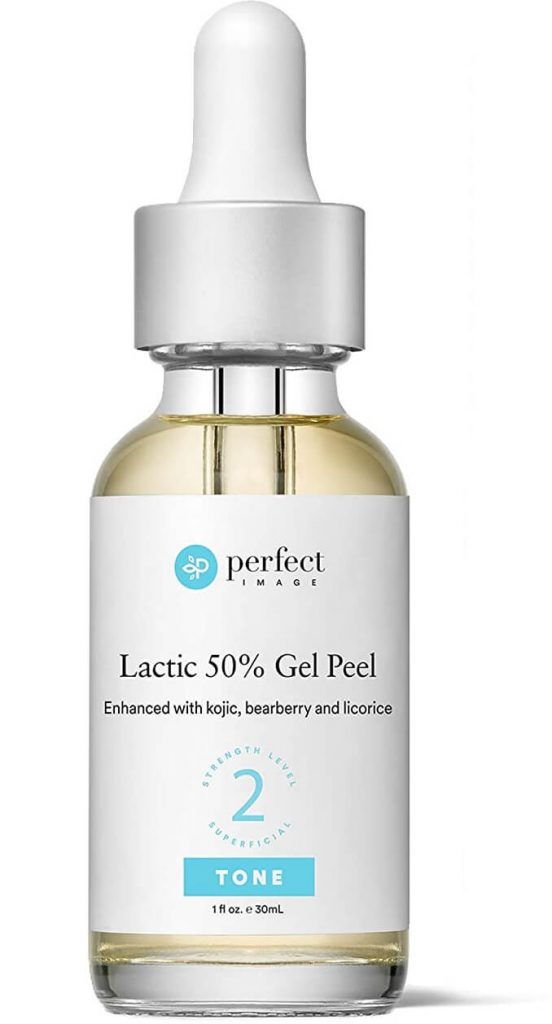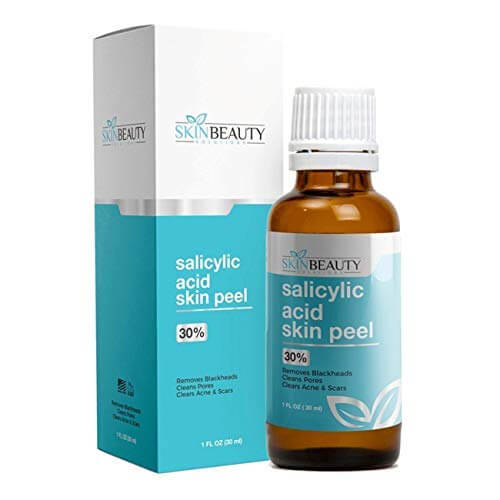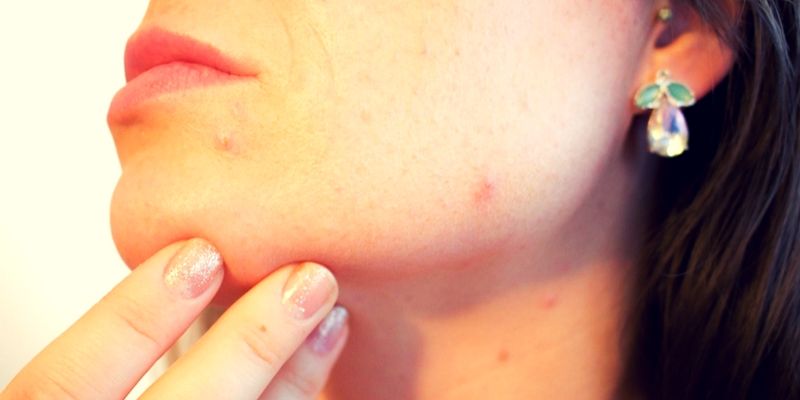Summer’s almost gone, and soon so will your tan as your skin returns to a normal color.
But maybe you’re one of the unlucky folks who’ve noticed they’ve been left with a little “parting gift” from the sun as a token of its appreciation for all the time you two just spent together the past 2-3 months.
If your tan has faded but you have patches of brown skin left behind that won’t return to normal then you’re dealing with sun spots.
These patches are more common in older people where they go by the name of “liver spots” or “age spots”. Some people just refer to them as “brown spots” on their skin. They sort of look like freckles. The good news is that these freckles are completely harmless. Still, it’s a good idea to make sure you aren’t dealing with any sort of skin cancer so check in with a dermatologist if you notice them changing size or shape over time.
It’s no mystery how these spots appear. Your skin accumulates sun damage over time as it gets repeatedly exposed to UV radiation. This wreaks havoc on a cellular level.
Normally when you tan, your skin ramps up it’s melanin production to help darken it and resist incoming UV rays. When these melanin producing cells called “melanocytes” begin malfunctioning, they keep producing melanin and that section of your skin retains it’s darker color long after the UV rays went away. Think of it as a permanent tan which really wouldn’t be so much of a problem on its own if the rest of your skin matched it in color.
Sun spots stick out and can quickly age skin which is why we’re going to help you get rid of them in this guide. Clear, even skin is the ideal we’re aiming for.
Of course, the best way of treating them is to prevent them from forming in the first place. You do this by using sunscreen. And not only when you’re going to the beach or on special occasions. You should be applying sunscreen every day because every time you step outside you’re exposing your skin to the sun’s rays.
If you want a tan but don’t want to potentially deal with any discoloration, use a self-tanner that’ll give you a natural glow or eat foods high in carotenoids. For a winning combination, do both and soon you’ll get your skin glowing like a Christmas tree.
So how do you treat these brown sun spots? Magic potions and the flick of a wand? Not exactly.
There’s only two steps:
- Exfoliate
- Bleach
And there are multiple ways you can accomplish each of these two steps.
We’re now going to go over the most effective treatments.
Sun Spot Treatments
To exfoliate, you have a number of options available. If you didn’t already know, exfoliators work by increasing the turnover rate of your skin cells. By removing the outermost layer, they’re able to reveal the younger, less pigmented skin cells underneath.
We mentioned before how it’s important to use sunscreen to prevent any further sun damage and future spots from forming. This is twice as important when using an exfoliator because you become much more vulnerable to the sun’s rays when the younger skin cells are first exposed. You will definitely have to use sunscreen after exfoliating otherwise you’d just be making the problem worse.
We recommend the following three for sun spots:
Glycolic Acid
Glycolic acid is an AHA (Alpha Hydroxy Acid) exfoliator that’s commonly used at levels of strength comparable to a facial peel. It can also be found in smaller concentrations to serve as a mild everyday-use product.

Glycolic Acid 30% Gel Peel by Perfect Image
>We recommend applying the glycolic acid over the affected areas twice a day, in the morning and at night before bed, unless the spot is located on your face — then just use it once a day. You do this because the skin on your face is more sensitive than the skin found on the rest of your body.
Lactic Acid
Lactic acid is another AHA type of exfoliator. Recall, if you’ve read our beginner’s guide to proper skin care, AHA’s also have the added benefit of attracting moisture to the surface of your skin helping tight skin become elastic. Thanks to these qualities and it’s relative gentleness compared to other, harsher exfoliants — lactic acid is perfect for those with dry or more sensitive skin types.

Lactic 50% Gel Peel by Perfect Image
Even though the above treatments are all AHA’s and have some sort of hydrating properties, it’s still a good idea to moisturize after using an exfoliator anyways. Some people react with redness or experience irritation after using these products and a quality moisturizer will be able to calm any adverse effects.
Salicylic Acid
Salicylic acid is usually thought of as an acne treatment but it can also help lighten discoloration if used consistently. Since it’s an exfoliator, it’ll work to remove the top layer of hyperpigmented skin cells.
The difference between salicylic acid and lactic or glycolic acid is that salicylic acid is a BHA (Beta Hydroxy Acid) rather than an AHA type of exfoliator. This makes it more suitable for people with oily skin types because BHA’s penetrate through sebum to reach clogged pores and work underneath the surface of the skin making it a more effective treatment. AHA’s mostly work only on the surface unlike BHA’s.
This doesn’t necessarily make them better, it just means certain skin types will react better to this type of treatment.

Salicylic Acid Skin Peel by Skin Beauty Solutions
Need Something Stronger?
Chemical Peels
If you’d like to try something a little more powerful than the above exfoliators and think your skin can tolerate it these would be the next thing to try.
At home chemical peels are dangerous if handled by someone who doesn’t know what they’re doing. There’s a reason they’re mostly used under professional supervision and in a controlled environment where they have direct control over the strength and length of treatment.
They do work but if you don’t know what your skin can tolerate, don’t risk damaging it with powerful chemical peels!
Retin-A
Tretinoin (Retin-A) is a proven method of exfoliating skin. Most commonly used for anti-aging purposes, this type of exfoliator isn’t available OTC but is prescribed by a professional. Potential problems you’ll encounter using Retin-A include irritated skin, redness, a stinging sensation and increased sensitivity. This is powerful stuff and it takes time to adjust to. We’re talking potentially weeks here.
Again, moisturizing afterwards is the key to making unwanted side effects manageable.
Bleaching Brown Spots
Now that we’ve gone over exfoliation let’s take a look at the 2nd part of our two-step process which will help lighten the skin. The goal here is to de-pigment the affected area.
Kojic Acid and Licorice Extract
We’ve talked about kojic acid (along with glycolic and lactic) in our hyperpigmentation article for acne. To keep it short here: It works…. for some people. There are also concerns of its safety during long-term use. Many skin lightening products contain kojic acid as an ingredient and some people have found moderate success using it. Others not so much.
There have also been multiple studies backing up topical licorice as an effective and natural method of bleaching skin. Like kojic acid, it’s most commonly found alongside other hyperpigmentation-fighting ingredients and skin lighteners.
We say it’s at least worth giving it a shot. Especially if other treatments haven’t worked well for you.
Vitamin C Serums
Here’s the deal — L-Ascorbic Acid, the active form of Vitamin C is great for general anti-aging purposes but to work best with hyperpigmentation, it needs to be combined with an exfoliator (like one of the ones we mentioned above) to see the best results, Otherwise, it’ll just take longer to treat the spots.
With consistent use, topical Vitamin C will keep your existing spots from getting any darker by acting as a natural skin brightener. This is a good thing because then exfoliation will work more effectively if the spots aren’t getting progressively darker over time.
Hydroquinone?
The most known and commonly used chemical for depigmenting skin is hydroquinone. While it certainly does help bleach your skin, there have been safety concerns and the FDA has issued a warning of it being a potentially carcinogenic ingredient. It has already been banned in most European countries and some Asian countries but as of right now, it’s available in the US with a prescription and has been deemed “safe” under the right conditions.
Since there are safety concerns, we’d say avoid at least until you tried the above bleaching remedies first. Consider this a last resort option (really it depends on your appetite for risk, we tend to err on the super-safe side).
What We Don’t Recommend
Lemon Juice, Lime, or Any Citric Acid
By far the most popular at-home bleaching remedy is lemon. Lemon contains citric acid which is a bleaching agent used in stain removers. Over time with consistent use and used alongside an exfoliator, it could have a decent effect on lightening affected areas.
So what’s the problem?
It’s too acidic (about a 2 on the pH scale)! Lemon juice is basically a light chemical peel and it does more harm than good for your skin. Lemons and limes contain citric acids which are simply too powerful on skin to recommend them for everyday use.
The better alternative is what we mentioned before: Vitamin C serums!
Advanced Treatments
If your spots still haven’t showed any signs of fading after about 6-8 weeks, the next step is to visit a dermatologist or specialized doctor. They’ll be able to use more powerful techniques to treat the spots.
We don’t recommend going straight to these treatments as a first option though — if you can handle the spots yourself it’s unnecessary to schedule doctor appointments and take the time out of your day. Not to mention these are costlier methods. But if you really want to fade the spots away and the above treatments aren’t working out for you, ask yourself if it’s still worth going through the effort and act accordingly.
Cryotherapy
This is a method which uses liquid nitrogen to “freeze” the area of the sun spot. After treatment, cryotherapy creates a scab that will have the targeted area of skin peel off over the next couple days.
It’s a relatively quick out-patient procedure but it’s important to look after the area to reduce the risk of infection. The person performing cryotherapy will tell you more about this if you choose to go this route. We just want to make you aware that it’s an option.
Laser Therapy
Laser technology is able to resurface your skin and target sun spots with pinpoint precision. We’ve talked a lot about lasers and how we feel about them in previous articles. Like so many other treatments, they work for some but others have a less enjoyable experience and feel that they leave the office worse than they came in.
It’s true that these require multiple sessions spread out over weeks in order to completely finish treatment. It takes time to see results. Another downside is costs – it can easily run you in the hundreds of dollars so it’s not for everyone.
Microdermabrasion
This is a relatively painless procedure that sprays tiny crystal-like objects at your skin. These crystals help exfoliate the pigmented skin cells. Like laser treatments, this requires multiple sessions before results really start to show. You can read more about microdermabrasion (and laser therapy) in this article intended for acne hyperpigmentation which works nearly equally as effective on sun spots.
Quick Recap
- Wear sunscreen! Let your current sun spot(s) serve as a warning to start looking after your skin.
- Exfoliate and Bleach. Experiment with products to find which one works best for you and then stick with them. Don’t expect overnight miracles.
- If all else fails, see a professional who might be able to do something about it. It’ll burn a hole in your pocket but if you can afford it, we believe youthful, clear skin is worth it.
What do you think? Have something to say about sun freckles? Any questions? Let us know @maxmylooks on Twitter or Pinterest!




